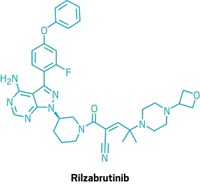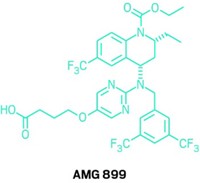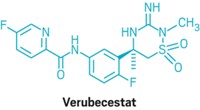Advertisement
Grab your lab coat. Let's get started
Welcome!
Welcome!
Create an account below to get 6 C&EN articles per month, receive newsletters and more - all free.
It seems this is your first time logging in online. Please enter the following information to continue.
As an ACS member you automatically get access to this site. All we need is few more details to create your reading experience.
Not you? Sign in with a different account.
Not you? Sign in with a different account.
ERROR 1
ERROR 1
ERROR 2
ERROR 2
ERROR 2
ERROR 2
ERROR 2
Password and Confirm password must match.
If you have an ACS member number, please enter it here so we can link this account to your membership. (optional)
ERROR 2
ACS values your privacy. By submitting your information, you are gaining access to C&EN and subscribing to our weekly newsletter. We use the information you provide to make your reading experience better, and we will never sell your data to third party members.
Pharmaceuticals
Where Are They Now? Revisiting Disclosures From Years Past
by Carmen Drahl
April 18, 2011
| A version of this story appeared in
Volume 89, Issue 16
C &EN has covered the “First Disclosures” symposium each year for nearly 10 years. This new feature returns to previously disclosed compounds to see how they are faring.
MLN518 (now tandutinib) The road from clinical trials to Food & Drug Administration approval can be long. For MLN518, an anticancer drug candidate from Millennium Pharmaceuticals (today, Millennium: The Takeda Oncology Co.) that had its structure disclosed at the spring 2002 ACS national meeting, the journey is roughly a decade old. The molecule has not yet been FDA approved. MLN518 blocks a kinase enzyme called FLT-3, part of a family of cell-signaling enzymes that has been implicated in a variety of cancers (C&EN, May 13, 2002, page 35).
In 2002, the company had initiated Phase I clinical trials of MLN518, which was later renamed tandutinib. The trials involved patients with acute myelogenous leukemia (AML), a form of cancer marked by rapid accumulation of abnormal white blood cells in blood and bone marrow, and a form where more than a quarter of patients have mutations in FLT-3. In 2006, the company published the results of that trial (Blood, DOI: 10.1182/blood-2006-02-005702). The trial was too small to test tandutinib’s antileukemia activity, and some patients experienced side effects such as muscle weakness. However, two patients with FLT-3 mutations exhibited evidence of an antileukemia effect. So Millennium continued to study the drug in multiple clinical trials to confirm that effect.
One of those trials, a Phase I/II clinical trial involving AML patients, combined tandutinib with two other chemotherapeutics, cytarabine and daunorubicin. In that trial, 21 of 29 leukemia patients on the combination treatment achieved complete remission (IDrugs 2008, 11, 46). In another of the trials, a small Phase II study of tandutinib in patients with metastatic kidney cancer, side effects such as fatigue emerged in 30% of the patients on the drug (Invest. New Drugs, DOI: 10.1007/s10637-010-9516-1). Clinical trials of tandutinib are ongoing involving patients with solid tumors such as glioblastomas, according to the ClinicalTrials.gov registry. Millennium did not respond to requests for comment on the drug’s status.
SCH-530348 (now vorapaxar) Since C&EN covered the first disclosure of the blood-clot-preventing drug candidate SCH-530348 in spring 2005, the molecule has been given the name vorapaxar. Originally discovered at Schering-Plough, the drug candidate became part of the Merck pipeline when Schering merged with Merck in November 2009.
Vorapaxar was inspired by himbacine, a molecule found in the bark of Australian magnolia trees (C&EN, April 18, 2005, page 40). It selectively blocks a protein called protease-activated receptor 1 (PAR-1), which is found on the surface of blood platelets. PAR-1 is activated by thrombin, a protease enzyme that has two big roles: helping platelets clump together and forming fibrin, the meshlike protein that’s a major component of blood clots. It was thought that by blocking PAR-1, vorapaxar would block platelet aggregation without interfering with clotting, thus reducing risk of heart attack without raising the risk of excessive bleeding.
By this year, vorapaxar was being tested in tens of thousands of patients in multiple Phase III clinical trials. On Jan. 13, an independent data safety monitoring board made changes to two large vorapaxar trials. In one study, patients who’d had a prior stroke were taken off vorapaxar, and the second study was discontinued. On Jan. 19, Merck confirmed that for patients with a history of stroke, vorapaxar increased the risk of bleeding in the brain. This development was a blow to the thinking about the benefits of vorapaxar’s mechanism. However, the safety monitoring board recommended that vorapaxar still be tested in more than 20,000 patients who do not have a history of stroke, and Merck is committed to doing so, said Brigham & Women’s Hospital cardiologist Eugene Braunwald, chair of one large vorapaxar clinical study, in a Jan. 19 Merck press release.







Join the conversation
Contact the reporter
Submit a Letter to the Editor for publication
Engage with us on Twitter